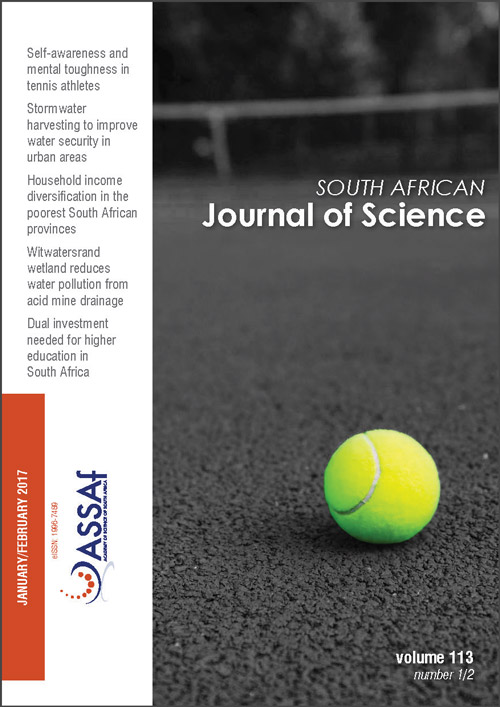Soil fertility constraints and yield gaps of irrigation wheat in South Africa
DOI:
https://doi.org/10.17159/sajs.2017/20160141Keywords:
tillage, wheat yield potential, yield gap analysis, conservation agricultureAbstract
South Africa currently faces a wheat (Triticum aestivum L.) crisis as production has declined significantly over the past few years. The objective of this study was to explore opportunities for improving yields in intensive irrigated wheat production systems of South Africa through analyses of yield gaps, soil fertility constraints and conservation agriculture practices. The study was conducted in the major irrigation wheat production areas across four geographical regions: KwaZulu-Natal, eastern Highveld, warmer northern and cooler central. Actual yield (Ya) based on long-term yield data ranged from 5.99±0.15 t/ha to 8.32±0.10 t/ha across different geographical regions. The yield potential (Yp) ranged from 7.57 t/ha to 11.45 t/ha. Yield gaps (Yp–Ya) were in the range of 1.58–3.13 t/ha. Yields could be increased by 26–38% through closing yield gaps. On 88.37% and 13.89% of the fields in the KwaZulu-Natal and warmer northern regions, respectively, there was strong evidence of the practise of conservation agriculture, but none in the other regions. On 42.31% of irrigated wheat fields, soil organic carbon was below 1% at a soil depth of 0–20 cm. Fields in which conservation tillage was practised had double the soil organic carbon of conventionally tilled fields (2.15±0.10% versus 1.02±0.05%), but greater acidity and phosphorus deficiency problems. Sustainable approaches for addressing phosphorus deficiency and acidity under conservation tillage practices need to be sought, especially in the KwaZulu-Natal region.
Significance:- Opportunities for improving wheat yields in South Africa need to be explored to address the wheat crisis.
- Sustainable approaches for addressing phosphorus deficiency and acidity of soil under conservation tillage practices need to be sought, especially in the KwaZulu-Natal region.
Published
Issue
Section
License

All articles are published under a Creative Commons Attribution 4.0 International Licence
Copyright is retained by the authors. Readers are welcome to reproduce, share and adapt the content without permission provided the source is attributed.
Disclaimer: The publisher and editors accept no responsibility for statements made by the authors
How to Cite
- Abstract 1023
- PDF 968
- EPUB 202
- XML 246













.png)